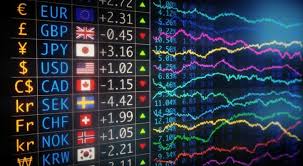
Forex exchange trading offers a unique opportunity to engage with the world’s largest financial market, where daily transactions exceed $6 trillion. Whether you are a beginner or an experienced trader, understanding the basics and nuances of forex trading is essential. In this comprehensive guide, we will explore various aspects of forex trading, including fundamental concepts, market dynamics, trading strategies, and resources you can utilize to enhance your trading skills. One excellent resource is forex exchange trading trading-terminal.com, which provides insightful tools and information for traders.
Understanding Forex Trading
The foreign exchange market, or forex, is where currencies are traded. It operates on a decentralized model and can be accessed 24 hours a day, five days a week. Forex trading involves buying one currency while simultaneously selling another, often represented in currency pairs such as EUR/USD or GBP/JPY. The first currency in the pair is known as the base currency, while the second is the quote currency.
Key Terminology
To grasp forex trading effectively, it’s crucial to familiarize yourself with key terminology:
- Pips: The smallest price move that a given exchange rate can make based on market convention.
- Leverage: The ability to control a larger position with a smaller amount of capital, which can amplify both gains and losses.
- Spread: The difference between the bid price (what you receive) and the ask price (what you pay).
- Lot: A standard unit of measure in forex trading, typically 100,000 units for a standard lot.

The Role of Fundamental and Technical Analysis
Successful forex trading requires a well-rounded approach that incorporates both fundamental and technical analysis.
Fundamental Analysis
Fundamental analysis involves evaluating economic indicators, interest rates, and geopolitical events that can influence currency values. Key factors include:
- Economic data releases, such as GDP, employment rates, and inflation indices.
- Central bank policies which can affect interest rates and currency supply.
- Political stability and economic performance of countries.
Technical Analysis
On the other hand, technical analysis involves analyzing price charts and patterns to forecast future movements. Traders use various tools and indicators, such as:
- Moving Averages: Used to smooth out price data and identify trends.
- Relative Strength Index (RSI): Measures the speed and change of price movements to identify overbought or oversold conditions.
- Fibonacci Retracement: Helps identify potential reversal levels based on key Fibonacci numbers.
Developing a Trading Strategy
Having a solid trading strategy is essential for success in forex trading. Here are steps to consider when developing your own:
- Define Your Goals: Determine what you want to achieve with trading, whether it’s short-term gains or long-term investment.
- Choose a Trading Style: Decide between day trading, swing trading, position trading, or scalping based on your goals and risk tolerance.
- Implement Risk Management: Establish rules for managing your capital, such as setting stop-loss orders to limit potential losses.
- Stay Informed: Keep up with market news and trends to adapt your strategy as needed.
The Importance of a Trading Plan
A well-structured trading plan is crucial for maintaining discipline. This plan should document your trading strategy, risk tolerance, and review processes for analyzing performance. Include the following elements:
- Market Analysis: A description of how you will analyze the markets.
- Entry and Exit Points: Criteria for entering and exiting trades.
- Risk Management: Set rules for position sizing to recalibrate your risk on each trade.
- Review Process: Regularly assess your trades to identify what works and what doesn’t.
Common Mistakes to Avoid
Even seasoned traders can make mistakes. Here are some common pitfalls to watch out for:
- Lack of Discipline: Failing to stick to your trading plan can lead to impulsive decisions.
- Overleveraging: Using excessive leverage can magnify losses, putting your capital at risk.
- Ineffective Risk Management: Not using stop-loss orders can lead to unmanageable losses.
- Emotional Trading: Letting emotions dictate trades can lead to irrational decision-making.
Choosing a Forex Broker
The choice of a forex broker can significantly affect your trading experience. Here are some critical factors to consider:
- Regulation: Ensure the broker is regulated by a reputable authority to minimize risks.
- Trading Platform: Evaluate the features, usability, and reliability of the trading platform.
- Spreads and Fees: Compare costs associated with trading and find a broker that offers competitive rates.
- Customer Support: Good customer service is essential, especially when issues arise.
Conclusion
Forex exchange trading can be both exciting and challenging. By understanding the fundamentals, employing effective strategies, and utilizing available resources like trading-terminal.com, you can enhance your trading journey. Remember that consistent practice, a disciplined approach, and a strong trading plan are keys to success in the forex market. As you embark on your trading career, stay patient and committed, and over time, you may find forex trading to be a rewarding pursuit.
